Just the Puzzle, Please
There’s something oddly comforting about a game that doesn’t pretend to be more than it is. No fluff. No elaborate narrative. No unnecessary lore jammed between cardboard. Just the puzzle.
We’ve spent a lot of time on this channel, droning on about theme, when it elevates a game versus when it’s just smoke and mirrors. To reiterate our stance: a compelling theme can absolutely pull you in, but so can a game that doesn’t even bother trying. Sometimes, the best theme… is no theme at all.
Stripped of the usual board game bait, no lavish art, no miniatures, no mystical creatures battling over hexes, Framework is a shining example of design distilled to its purest form. It’s all function, no frills. And it works.
Uwe Without the Animals
Designed by Uwe Rosenburg, Framework is a tile placement game that ditches a thematic pretense entirely in favour of delivering a sharp, efficient, and clever little puzzle. It’s a rare game that feels completely self-assured without needing a backstory or fantastical art.
Contrast that with the last Uwe game we reviewed—one we felt was bogged down by its attempts to shoehorn in a theme, overcomplicating its own mechanics *cough Planta Nubo cough.* Framework, by comparison, is streamlined. Distilled. Intentional.
Before we go on, this won’t be a comparison post to other games from Uwe’s oeuvre. While we’ve tried Indian Summer, Patchwork, and New York Zoo, Framework feels notably different—less cozy and far more clinical.
But that’s fine.
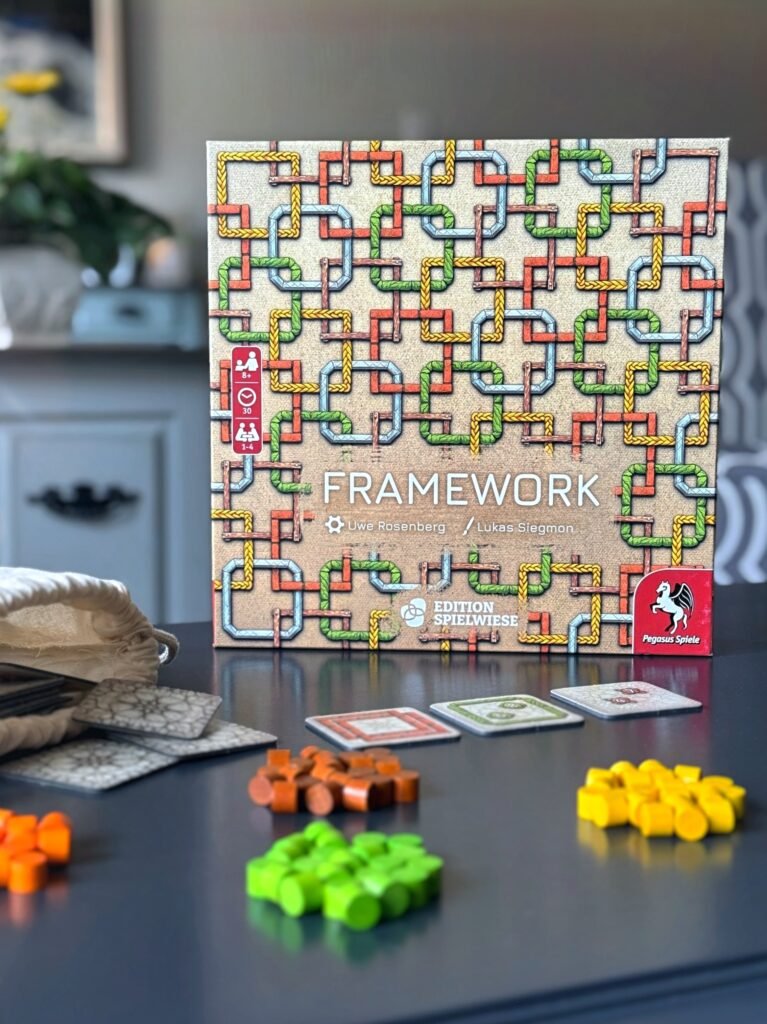
It trades fox meeples and quilt tiles for structure and sharpness, and feels distinct enough to own alongside the others. It’s also part of a design lineage that includes Nova Luna and Sagani, but we won’t be drawing comparisons to those yet—we haven’t played them.
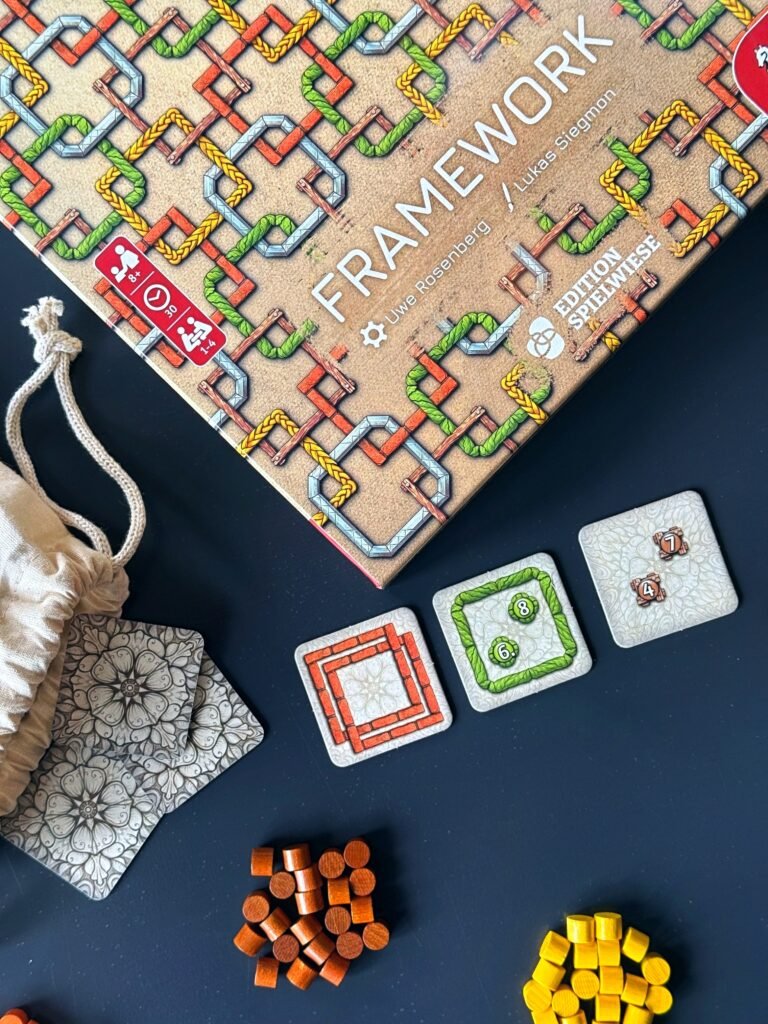
How It Plays
In Framework, players race to place all their tokens by completing tasks shown on square tiles. These tiles are drawn from a bag and drafted into personal tableaus. Some tiles offer tasks, some feature coloured frames, and some combine both. To place a token, a task on one of your tiles must be completed by creating a network of adjacent tiles with the correct colour frames. It’s part efficiency puzzle, part spatial logic challenge, and part race.
Each round, the active player draws tiles equal to the number of players plus one. Starting with them and moving clockwise, each player drafts one. The active player always takes two: one at the start and one at the end. Then the bag passes, and the cycle continues until someone places their final token and wins.
Tasks and Tile Tension
Tasks are clever and varied. Some simply want five brown frames connected. Others ask for combinations—maybe two frames of one colour or another. Some are conditional: do X before Y. There’s enough variety here to keep the puzzle fresh without becoming convoluted.
Scoring often takes a few rounds to ramp up; early turns are all setup and scaffolding. But once you crack open that scoring dam, tokens tumble out quickly.
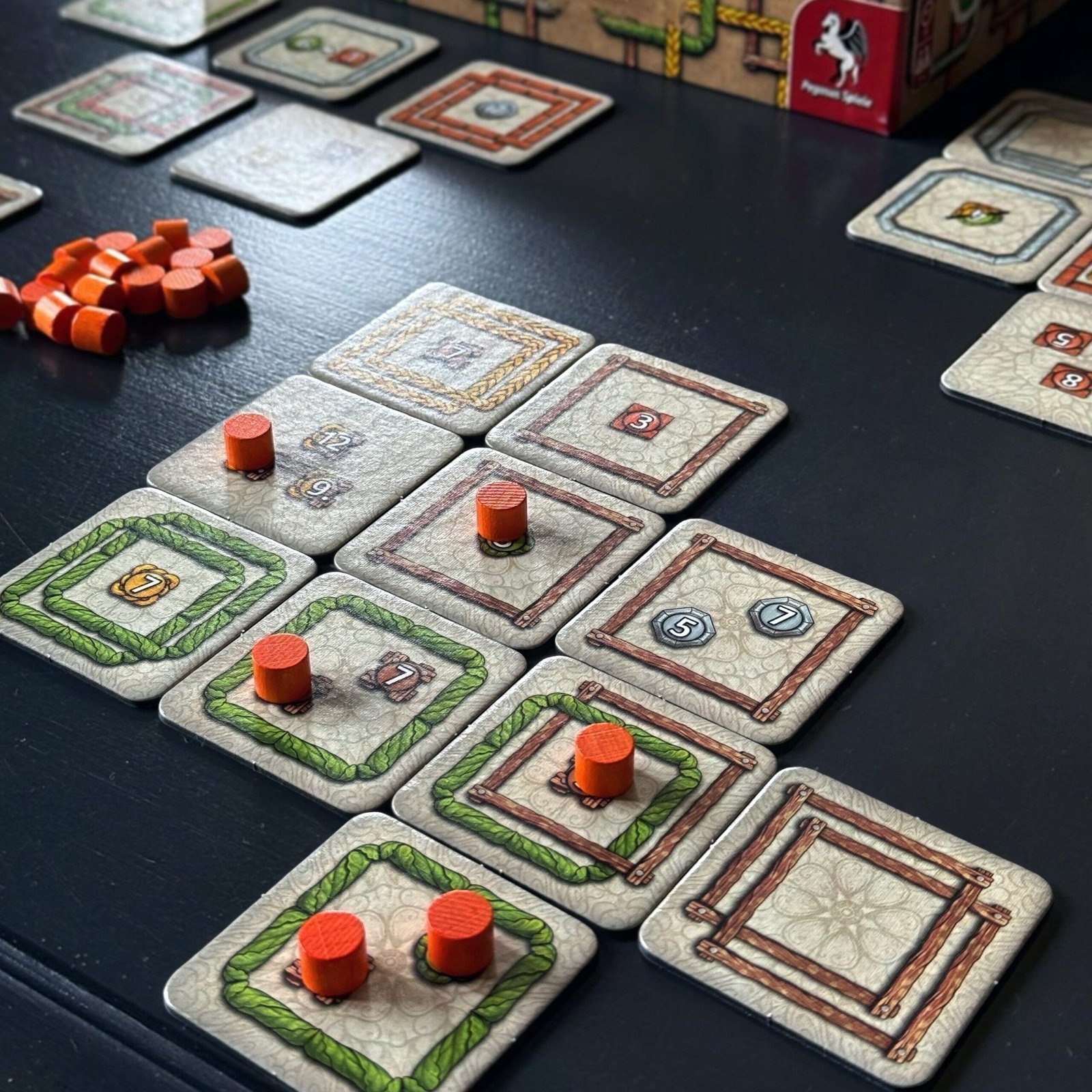
Tactical Drafting with a Pinch of Sabotage
If you focus too much on your own puzzle and ignore your opponents’ tableaus, you may be handing them the win, especially in a two-player game. Once someone sets up their network efficiently, new tiles can start triggering multiple tasks at once. It’s thrilling when you’re the one who figures it out first; the game gives you that engine-building satisfaction without the actual engine-building. But if your opponent gets ahead early, it can be tough to catch up. Even hate-drafting might not be enough.
It’s not just about what you take, but when and where you place it. Should you prioritize extending a network of green frames to hit a high-value task later, or should you grab a frameless tile that instantly completes a smaller one? The decision space is tighter than it seems at first glance, and in a game where your opponents are always watching, hate-drafting becomes a deliciously tempting strategy. Deny a tile here, block a connection there… it’s a clean little sandbox for subtle sabotage. But get too caught up in disruption, and your own network can suffer.
Luck, Timing, and Strategic Growth
Of course, luck plays a role. You’re pulling tiles blind from a bag, and sometimes the spread just doesn’t work for you. But even then, you’re rarely without options. There’s almost always a “least bad” tile that maybe helps you a little… or hurts your opponent a lot.
One of the most satisfying aspects of Framework is the tension between short-term gratification and long-term planning. Tiles with multiple frames can serve as flexible connective hubs between tasks and networks, perfect for efficiency, but everyone wants them, so don’t hesitate. Even if a triple-frame tile doesn’t help you now, you’ll probably benefit from it later.
Frameless tiles, by contrast, are dull but decisive. They can complete tasks immediately but halt the flow of your network, forcing awkward rerouting. You’ll want to avoid building yourself into a corner. Leave space to grow, to loop a network back in on itself, to stretch a yellow path toward a task you haven’t even drawn yet. With no board perimeter, you’ve got the freedom to expand wherever you want, just don’t let that freedom turn into a mess of misfires.
Scaling and the Sweet Spot
At higher player counts, see more tiles in the pool each round but wait longer between drafting twice. This evens out the randomness a bit, giving you more options to choose from when it comes around to your turn, but fewer turns to get the perfect setup.
Still, it scales well. We like it best at two, where the head-to-head makes each draft feel personal and deliberate, almost like a duel. But it holds up just fine at higher counts.
Sleek, Sharp, and Surprisingly Satisfying
Mechanically, there’s very little overhead. Shake the bag, draw tiles, and off you go. It’s quick to teach, plays in under an hour, and doesn’t encourage much analysis paralysis. The art is functional but not flashy. You’ll never mistake this game for a show-stopping production, but it doesn’t need to be. The clarity of design is the appeal.
In fact, the more you play, the more you appreciate how smartly everything fits together. That moment when you suddenly score three tasks in a turn? Exhilarating. Abandoning a tile that’s no longer worth the effort? Liberating. Realizing your opponent has only two tokens left and you’ve been too busy derailing their plans to finish your own? Humbling.
Final Thoughts
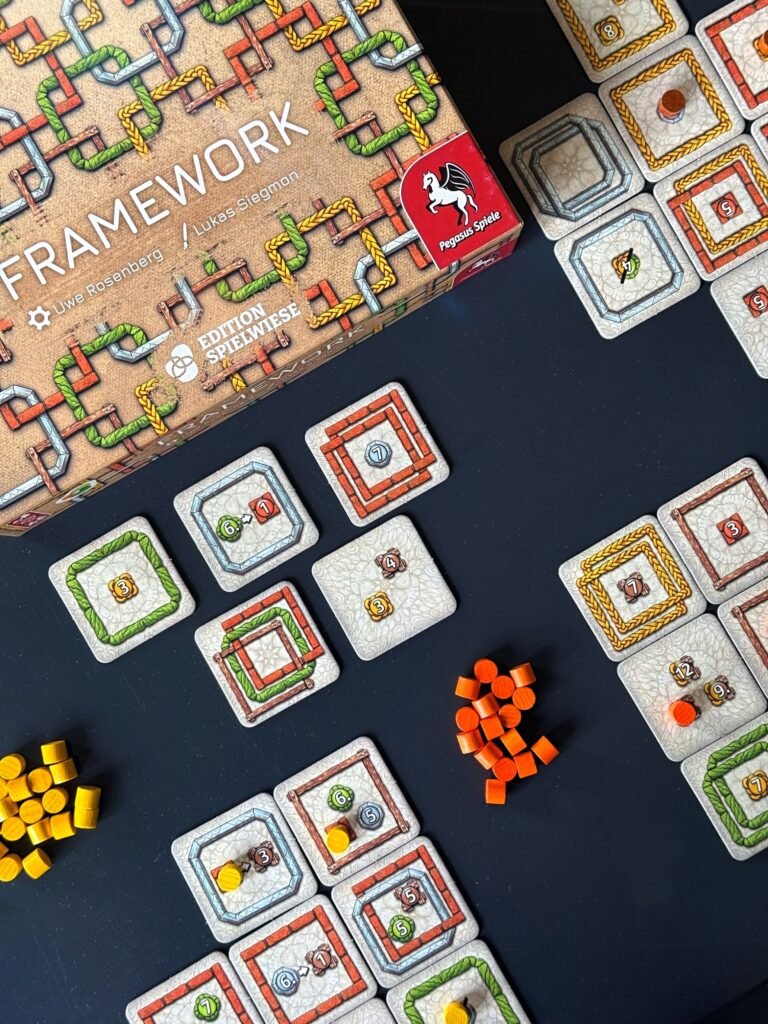
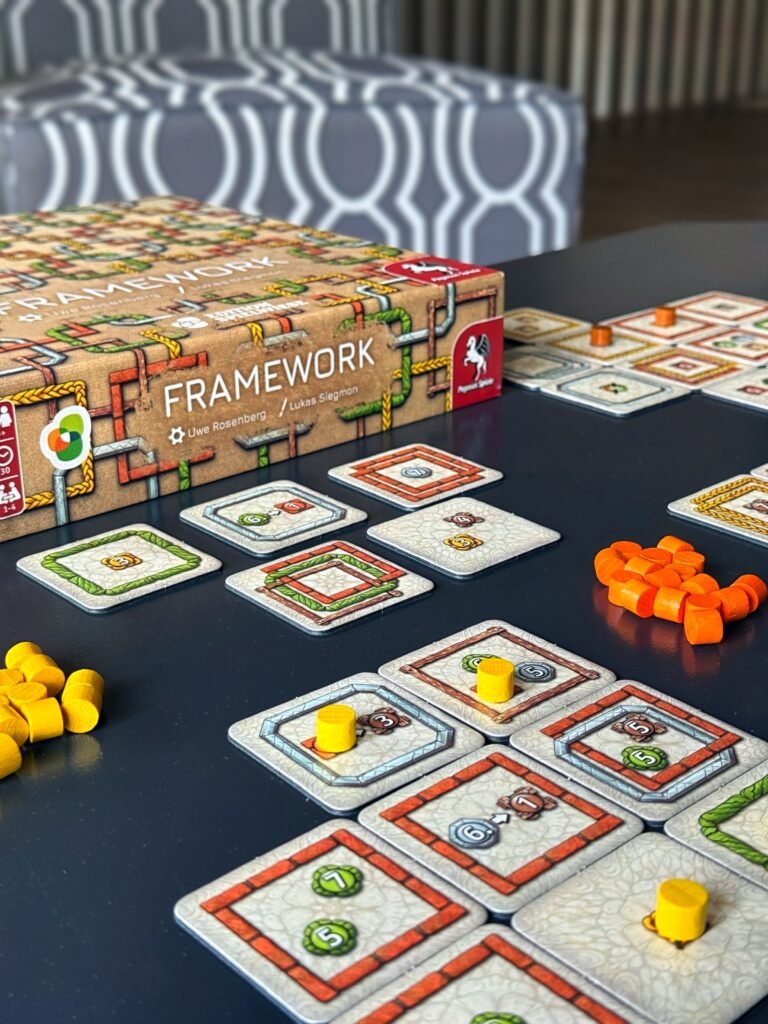
Sure, it’s not going to dazzle fantasy fans or make anyone drool over deluxe components. But Framework earns its spot in our collection by doing what it sets out to do cleverly, confidently, and cleanly. It’s refreshingly compact and strategically sharp.
No dice.
No theme.
No distractions.
Just frames. And the choices you make between them.
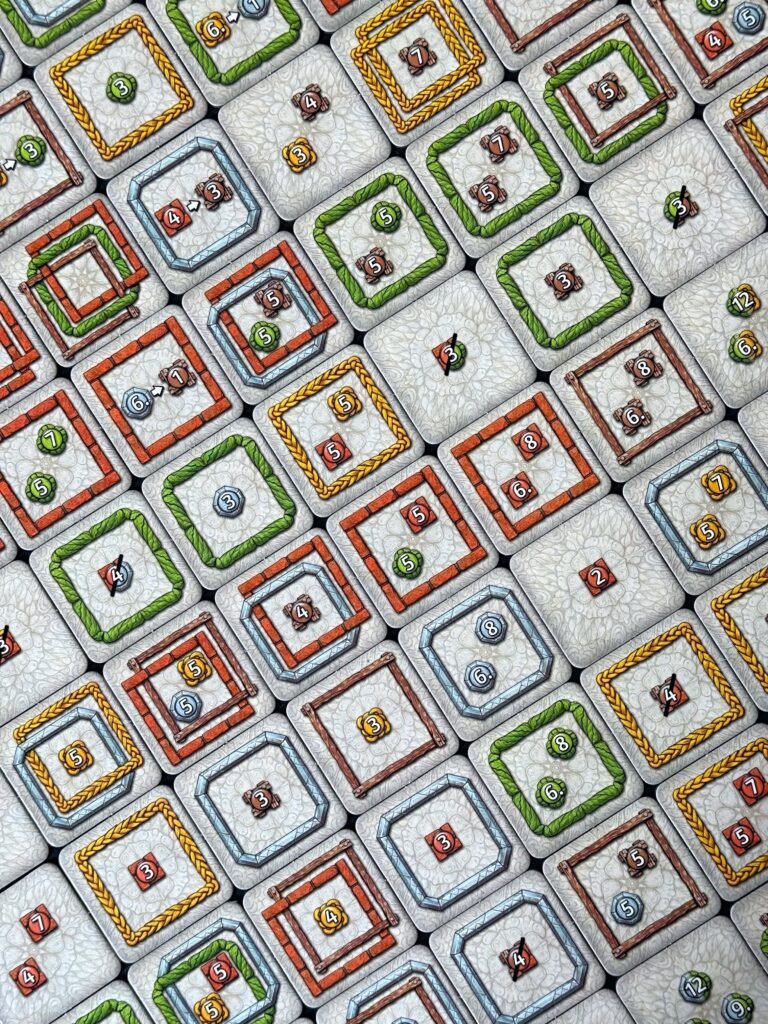
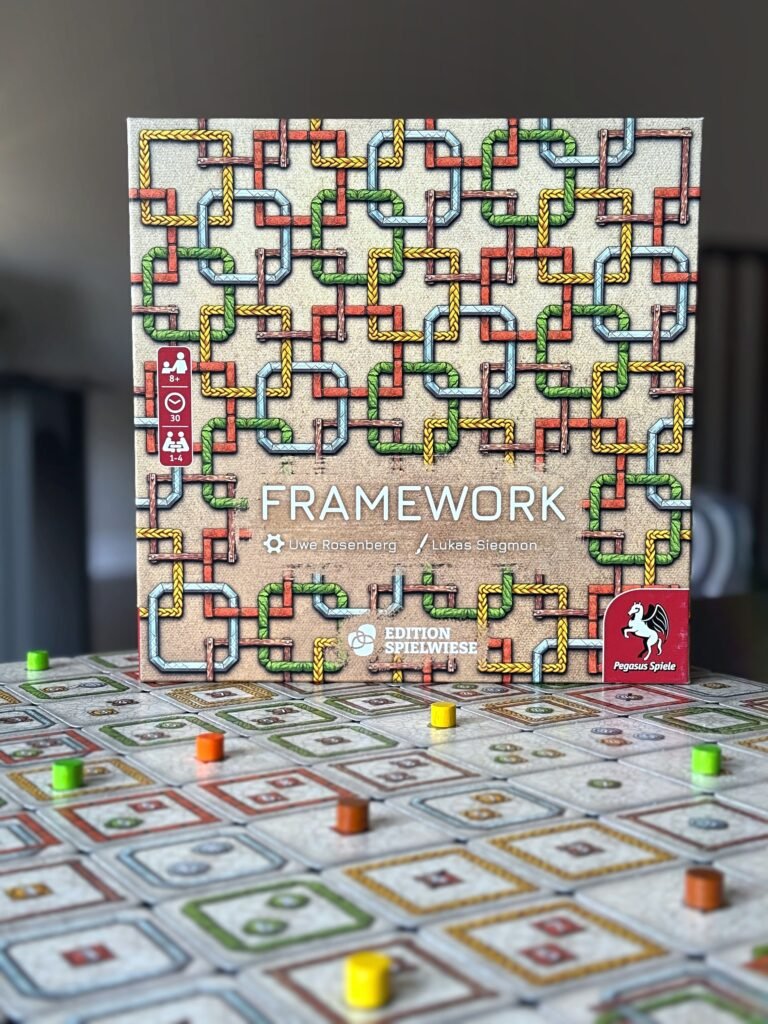
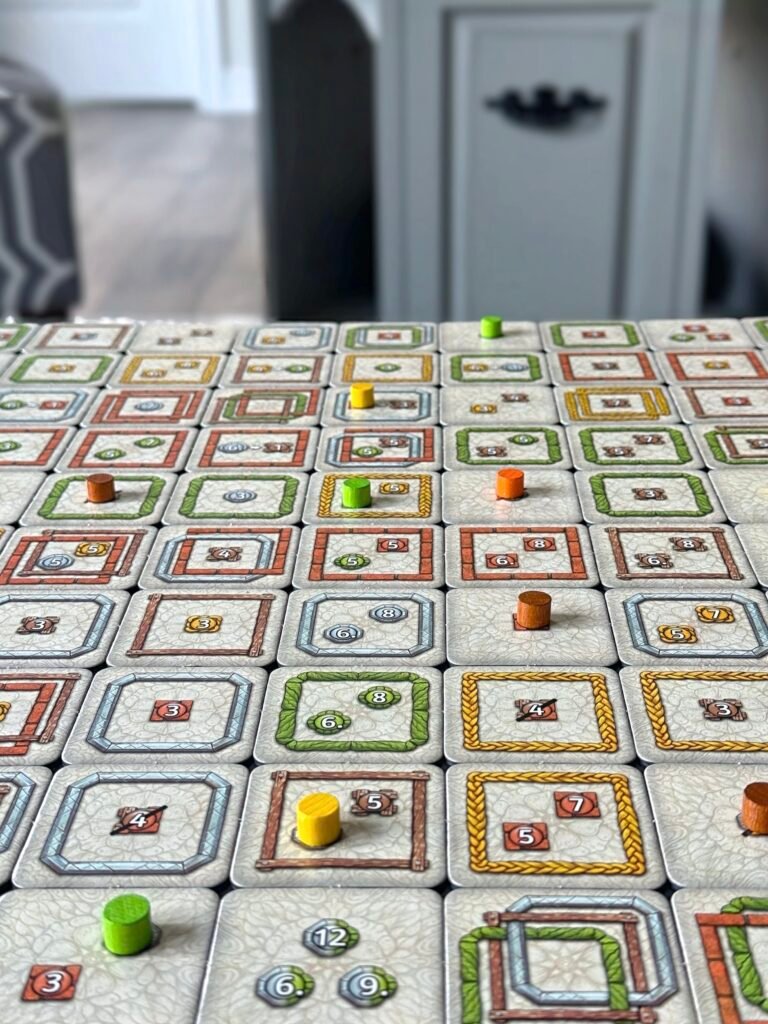
Corinna’s Rating: 7.3
Duncan’s Rating: 7.9


Leave a Reply